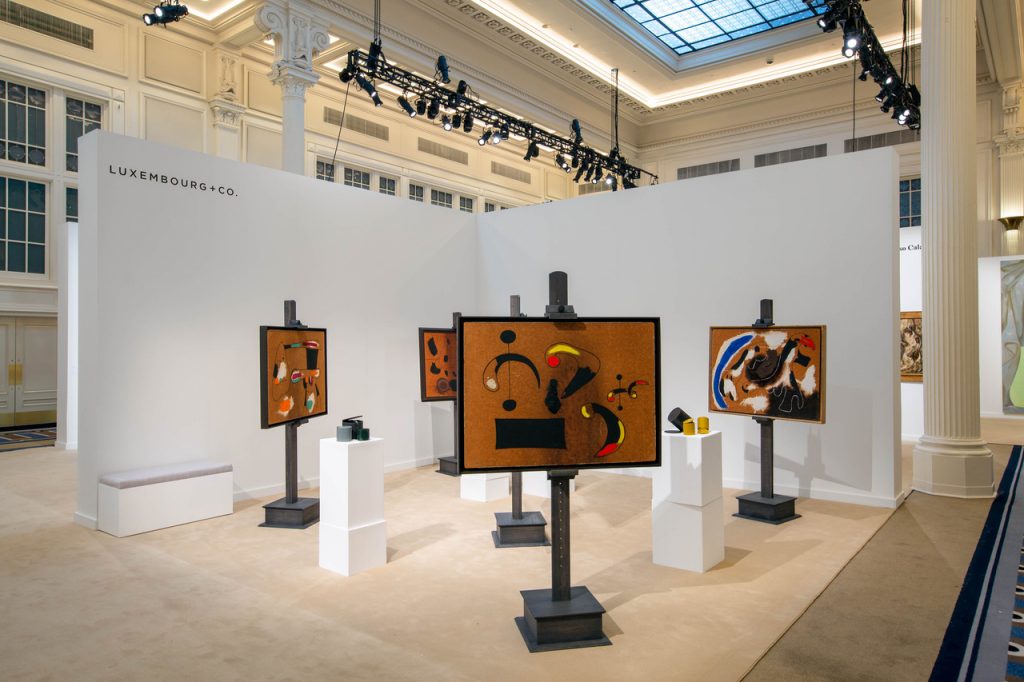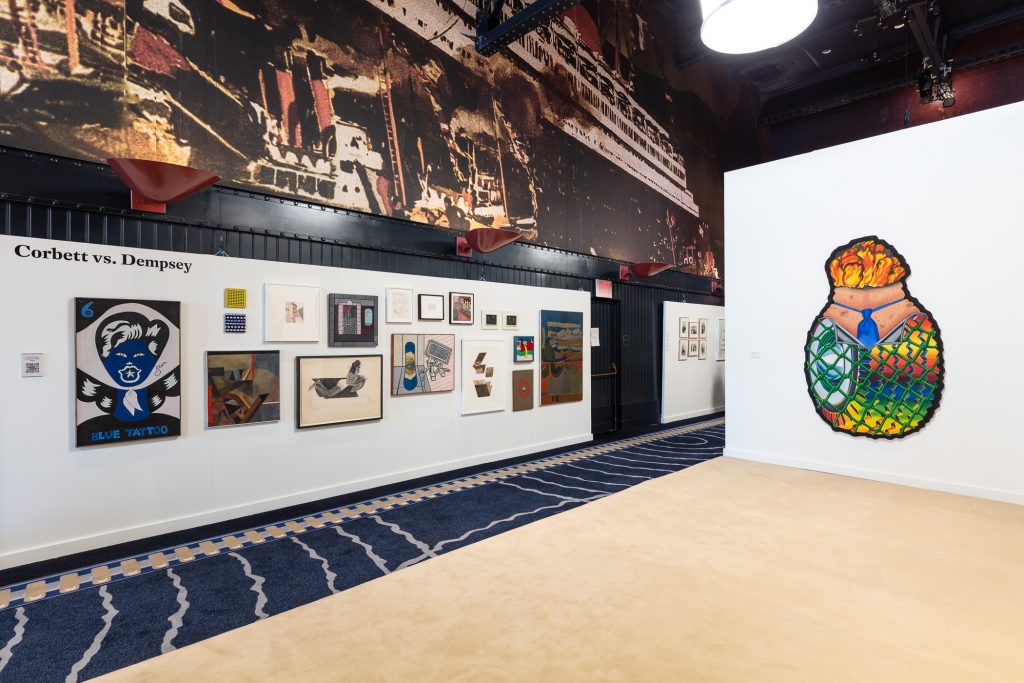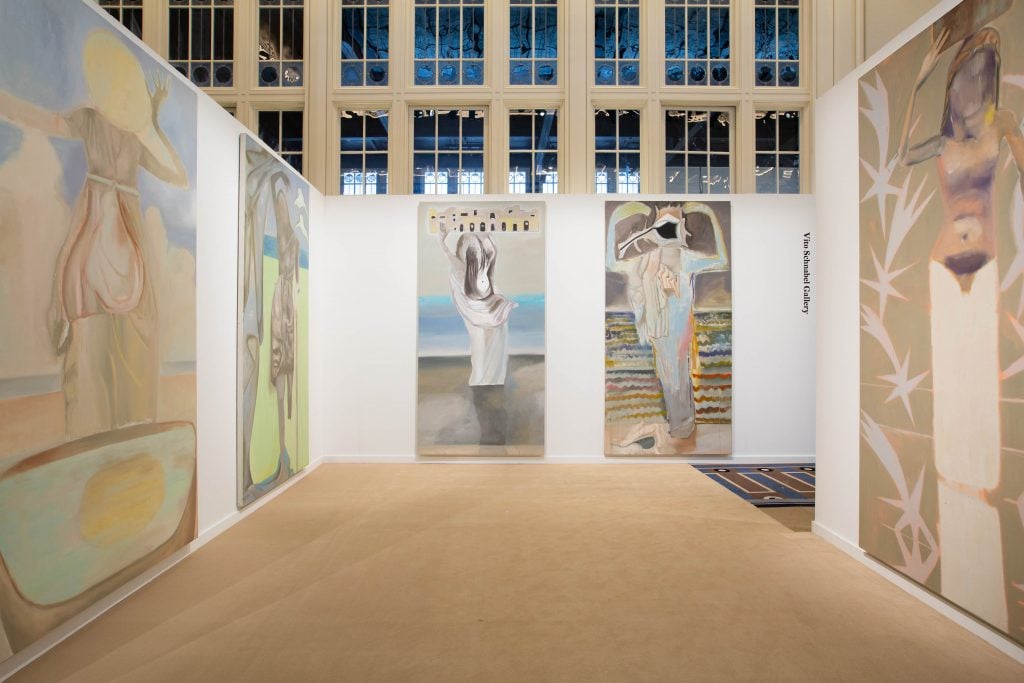Gallery Network
In Its Second Edition, Independent 20th Century Rethinks the Boundaries of Contemporary Art
The fair continues its mission of fostering fresh dialogue about the history of 20th century art.

The fair continues its mission of fostering fresh dialogue about the history of 20th century art.

Artnet Gallery Network

Last year, Independent New York launched the inaugural edition of its sister fair, Independent 20th Century, held at the Battery Maritime Building in downtown New York, highlighting art and artists from 1900 to 2000.
The fair is distinct both in that it is a manageable size in comparison to the vast, mega fairs that have come to dominate the art world calendar, but also in that its core aims extend far beyond just selling art. “We’re much more interested in the conversations that start at the Independent and then one, five, 10 years later, seeing where those conversations go,” said Matthew Higgs, Independent’s founding curatorial advisor. “The Independent fair still focuses primarily on the new, the recent, and Independent 20th century gives us an opportunity to think about the recent past within this framework of the 20th century, trying to reframe it, trying to complicate the timeframe itself. We hope the fair evolves, more galleries participate, and the real goal is to initiate conversations that perhaps haven’t happened before or weren’t necessarily happening in this way.”
One such conversation centers around the term “contemporary” as it relates to art, which has become something rather fluid in recent years; at once referring to what is happening now today, it also increasingly encompasses a large swathe of art made in the 20th century, and what could arguably also be considered historic.
“If we look at the way that most institutions, specifically contemporary art institutions, programs, what we find is a lot of the material they’re showing us is essentially historical. And then we’ve seen commercial galleries start to represent artist estates—if you look, say, 20 years ago, very few contemporary art galleries did. And now, artist estates are pretty much represented at every contemporary art gallery. So this kind of porous and elastic idea of the historical and the contemporary I think has become increasingly interesting,” said Higgs.

Installation view of “Ivens Machado,” Fortes D’Aloia & Gabriel at Independent 20th Century, New York (2022). Photo: Alexa Hoyer. Courtesy of Fortes D’Aloia & Gabriel, São Paulo/Rio de Janeiro.
On why they chose to participate in the inaugural edition of Independent 20th Century, Marcia Fortes said, “with the fair being smaller with fewer galleries, more historical, and the proposal of showcasing only 20th-century artists, it sounded perfect because we are not an estate-oriented gallery. This is kind of a niche in our program, but we have taken representation of three estates in the past year, and work with four estates in total. Independent 20th Century has this nice balance of contemporary and historical programs in terms of galleries, and it really sounded like the perfect context for us to showcase the estate of the late artists whose estates we had taken on to represent.”
For the inaugural edition, Fortes’s gallery Fortes D’Aloia & Gabriel showcased the work of Brazilian artist Ivens Machado, and for the forthcoming fair will present work of Wanda Pimentel, an artist who was an influential figure within Brazil’s New Figuration movement—a movement that was heavily influenced by Pop art. As one of the few women artists participating, her work and practice are an integral—though sometimes overlooked—facet of the 20th-century art canon. Reassessment of the canon crops up regularly within art world discourse—particularly within the context of major art fairs—but often as a secondary, even tertiary theme. But at Independent 20th Century, it is an inherent part of the fair’s ethos, and part of a greater conversation which participating galleries have been keen to engage with, and is integral to understandings and reconsiderations of contemporary art on the whole.

Installation view of “Joan Miró with Peter Fischli,” Luxembourg & Co. at Independent 20th Century (2022). Courtesy of Independent New York.
Within the art world at large, particularly at the museum and institutional level, the boundary between historical and contemporary art is often seen as clear-cut; in part for practical reasons but also in part due to preconceived notions of what is prevalent or influential today. Within the context of Independent 20th Century, however, historical art and art history is not something simply to be looked at as an artifact or unchangeable narrative, but instead as something to be dialogued with, built upon, expanded.
“There’s always been a link between what artists did in the past and what artists are doing today—and there’s always been a certain danger when you venerate the past. There’s nostalgia, but also a tendency to look at everything that has been done already as this kind of one-off, amazing thing, and then forget how influential that is on what is happening today,” said Alma Luxembourg.
At the 2022 iteration of the fair, Luxembourg & Co. showed a series of Masonite paintings by Joan Miró in dialogue with work by Peter Fischli. At once historical and contemporary, the presentation offered a throughline that connected the historical with the contemporary.
“With our shows, we aim to have a specific focus and point of view. And, like the fair, look at artists who maybe have not had as much attention or even specific moments in very famous artists’ careers that deserve a second look, like we did with the Miró Masonite paintings. Those were all paintings that were done in 1936, at a very specific moment, and have not been the most well-known or explored within his body of work…with the work by Fischli, these two artists perhaps wouldn’t be put necessarily in the same lineage, but there are commonalities and a continuation in the contemporary practice of groundbreaking, modernist legacy, which is interesting to explore.”

Installation view of “Before and After Imagism,” Corbett vs. Dempsey at Independent 20th Century (2022). Photo: Silvia Ros. Courtesy of the artists and Corbett vs. Dempsey, Chicago.
Through lines from and dialogues between past and present not only offers collectors, curators, and general visitors to the fair an invaluable opportunity to analyze preconceived notions of past and present, historical and contemporary, but also brings to light art and artists that have not been given the due or attention warranted.
“The last few decades have been marked by an awareness of how much has been left out of the canon. There’s been a strong pull towards rediscovery, reconsideration, and revamping both in specific ways and in a more general, across-the-board manner. I think that has come to be part of contemporary art discourse at this point. When you’re talking about contemporary art, you’re not only talking about what’s going on right now or what’s been going on for the last 10 or 20 years, you’re really also talking about how what’s going on right now relates to all of the new discoveries in terms of revamping our sense of the historical continuum,” said John Corbett of Corbett vs. Dempsey gallery.
Last year, Corbett vs. Dempsey presented “Before and After Imagism,” a selection of works by the Chicago Imagists, a mid-century group of artists working largely in figurative and representational styles. The Chicago Imagists and the artists working in parallel to them did not receive the same critical attention as their contemporaries working in the abstraction-centric art world of New York—but the presentation at Independent 20th Century offered contextualized insight into the vibrant and influential artistic milieu of the time and place. In September, the gallery will showcase the work of Cuban-American artist Emilio Cruz, an important contributor to American Modernism whose work rightfully belongs back in the limelight.

Installation view of Francesco Clemente, Vito Schnabel Gallery at Independent 20th Century (2022). Courtesy of Independent New York.
Ahead of the forthcoming second edition in September, Independent 20th Century promises to both continue the dialogues begun in the first iteration, as well as further platform reconsiderations of the canon and an expanded understanding of contemporary art.
“With Independent 20th Century, we thought about how we could create a platform that would embrace all of these different ideas and how work that might previously have been thought of as art historical might actually just resonate in the present in a wholly different way. That’s what we attempted to do in the first edition of Independent 20th Century and, as the fair goes forward, accumulates more editions, we hope that it becomes an increasingly interesting and more complicated story. I certainly think this unraveling of the contemporary is really, probably the most dominant and important idea in the art world of the past decade,” Higgs said.
Independent 20th Century is open September 7–10, 2023.